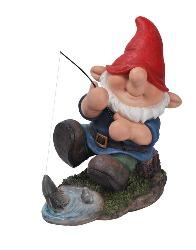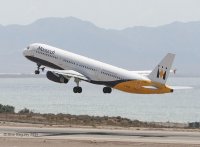- Posts: 1045
- Thank you received: 415
Back to Basics
- Brian
-
 Topic Author
Topic Author
- Offline
- Platinum Member
-

Less
More
3 years 9 months ago #25665
by Brian
Replied by Brian on topic Back to Basics
Thank you for editing my March 3rd submission Phil. Three themes, three paragraphs!
Thanks again, I think you've tweaked the way photos are inserted, my last three came out in the same order that they went in.
Thanks again, I think you've tweaked the way photos are inserted, my last three came out in the same order that they went in.
The following user(s) said Thank You: Phil Ford
Please Log in or Create an account to join the conversation.
- Brian
-
 Topic Author
Topic Author
- Offline
- Platinum Member
-

Less
More
- Posts: 1045
- Thank you received: 415
3 years 9 months ago #25666
by Brian
Replied by Brian on topic Back to Basics
Sanding through the sheeting on the fin made me realise that there was no way to rectify that kind of mistake other than re-make the part. There was nothing to lose by trying to remove the sheet from the structure, there was just enough stock for a new framework for the fin, so replacing it wasn't a problem. The easy fix was easier than I had anticipated. Using the old leather knife, the sheet came away from the structure very easily, cleanly too. The structure was then sanded to a gentle taper from root to tip. It is now on the building board, glued up, pinned and weighted.
I couldn't wait for the 1 Litre container to weight test the control horn/elevator joiner assembly. I used an old 2 Litre container, a bit more than half filled with water. No problem at all. I'll use the assembly without that niggling worry that it just might fall apart.
While waiting for the glue to dry, I re-read all the notes on Moonglow , six A4 sheets in all. A couple of recommendations appeal. A longer nose leg to make taking off from grass a bit easier, and reducing the dihedral to 1" under one wing tip with the other wing down firmly on the building board. I have dithered about whether to include nose wheel steering, but I realised that if the designer didn't have it on the plan, then it wasn't needed. I dithered even more over the aileron servos. As designed, Moonglow has a single servo driving the ailerons via two bellcranks. Apart from the need to build a backlash free assembly, it seems OK. Using ball joints would make things a lot easier to get right too. Originally I'd sketched up the ailerons with separate servos, then I thought about not only the extra weight of an additional servo, but when rolling the model, the extra inertia caused by having the servos way out on the wing. I'll be sticking to the designer's original set up, apart from the use of ball joints.
I couldn't wait for the 1 Litre container to weight test the control horn/elevator joiner assembly. I used an old 2 Litre container, a bit more than half filled with water. No problem at all. I'll use the assembly without that niggling worry that it just might fall apart.
While waiting for the glue to dry, I re-read all the notes on Moonglow , six A4 sheets in all. A couple of recommendations appeal. A longer nose leg to make taking off from grass a bit easier, and reducing the dihedral to 1" under one wing tip with the other wing down firmly on the building board. I have dithered about whether to include nose wheel steering, but I realised that if the designer didn't have it on the plan, then it wasn't needed. I dithered even more over the aileron servos. As designed, Moonglow has a single servo driving the ailerons via two bellcranks. Apart from the need to build a backlash free assembly, it seems OK. Using ball joints would make things a lot easier to get right too. Originally I'd sketched up the ailerons with separate servos, then I thought about not only the extra weight of an additional servo, but when rolling the model, the extra inertia caused by having the servos way out on the wing. I'll be sticking to the designer's original set up, apart from the use of ball joints.
Please Log in or Create an account to join the conversation.
- kevinross
-

- Offline
- Platinum Member
-

Less
More
- Posts: 1028
- Thank you received: 583
3 years 9 months ago #25667
by kevinross
Replied by kevinross on topic Back to Basics
i think your concerns about the moment of two wing servos are if founded Brian.
A couple of modern lightweight mini servos will be perfect and reduce the workload. But most important is you can adjust the Aileron differential at the touch of a button or two
A couple of modern lightweight mini servos will be perfect and reduce the workload. But most important is you can adjust the Aileron differential at the touch of a button or two
The following user(s) said Thank You: Brian
Please Log in or Create an account to join the conversation.
- Brian
-
 Topic Author
Topic Author
- Offline
- Platinum Member
-

Less
More
- Posts: 1045
- Thank you received: 415
3 years 9 months ago #25668
by Brian
Replied by Brian on topic Back to Basics
Thank you for your comment Kevin. You've made me realise that the servos we use today are more powerful and a good deal lighter than those used on the original Moonglow. Perhaps a couple of decent spec 9g servos would do the job. Certainly a bonus to be able to trim each servo individually. Perhaps do the same with elevator and rudder, dispense with the long push rods and fit the servos to the rear of the fuselage. My original thoughts were to use pull/pull on the rudder and a 6mm carbon fibre tube for the elevator pushrod. I'll have to drop some parts on to the Boss's kitchen scales and do a few sums involving weights and distance from the C of G. Right! That's Saturday night sorted, I don't like Saturday night TV offerings anyway, so nothing lost there.
Please Log in or Create an account to join the conversation.
- kevinross
-

- Offline
- Platinum Member
-

Less
More
- Posts: 1028
- Thank you received: 583
3 years 9 months ago #25669
by kevinross
Replied by kevinross on topic Back to Basics
Cant recall the fuselage progress but if it not finished - Have you considered a small extension to the nose then lay the parts to achieve the correct C of G
Please Log in or Create an account to join the conversation.
- Brian
-
 Topic Author
Topic Author
- Offline
- Platinum Member
-

Less
More
- Posts: 1045
- Thank you received: 415
3 years 9 months ago #25670
by Brian
Replied by Brian on topic Back to Basics
The fuselage is in the first stage of assembly. Sides with triangle reinforcement, three formers and good old fashioned beech engine bearers. The upper and lower parts of the fuselage are from thick
sheet balsa. I've considered changing the structure from balsa to polystyrene foam. The plan calls for the top decking to be made from 1/2" sheet balsa, a lot of carving and a lot of waste wood. The underside of the fuselage is similar but from 3/8" balsa. Once again, I have considered using foam but I am torn between building a model to the original design, or creating a model that looks like the original design but uses materials not available way back in the 1960s. I suppose that as long as I keep to the original lines of the model, the composition of the materials used is of little importance, if foam had been available then, I'm sure it would have been used.
sheet balsa. I've considered changing the structure from balsa to polystyrene foam. The plan calls for the top decking to be made from 1/2" sheet balsa, a lot of carving and a lot of waste wood. The underside of the fuselage is similar but from 3/8" balsa. Once again, I have considered using foam but I am torn between building a model to the original design, or creating a model that looks like the original design but uses materials not available way back in the 1960s. I suppose that as long as I keep to the original lines of the model, the composition of the materials used is of little importance, if foam had been available then, I'm sure it would have been used.
Please Log in or Create an account to join the conversation.
Moderators: DaveBright
Time to create page: 0.291 seconds
Latest Posts
- No posts to display.
©
2009 - 2025
WMAC PCF Design
